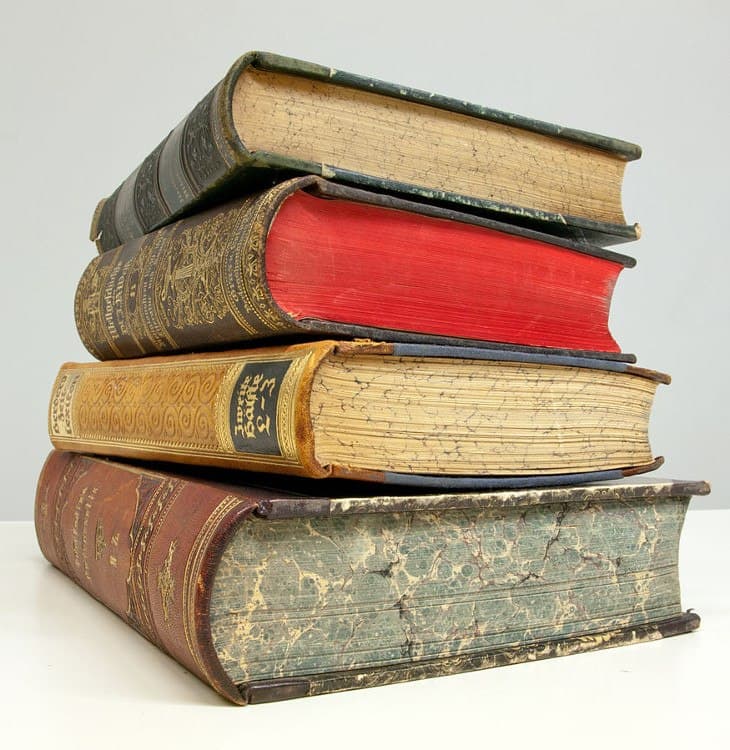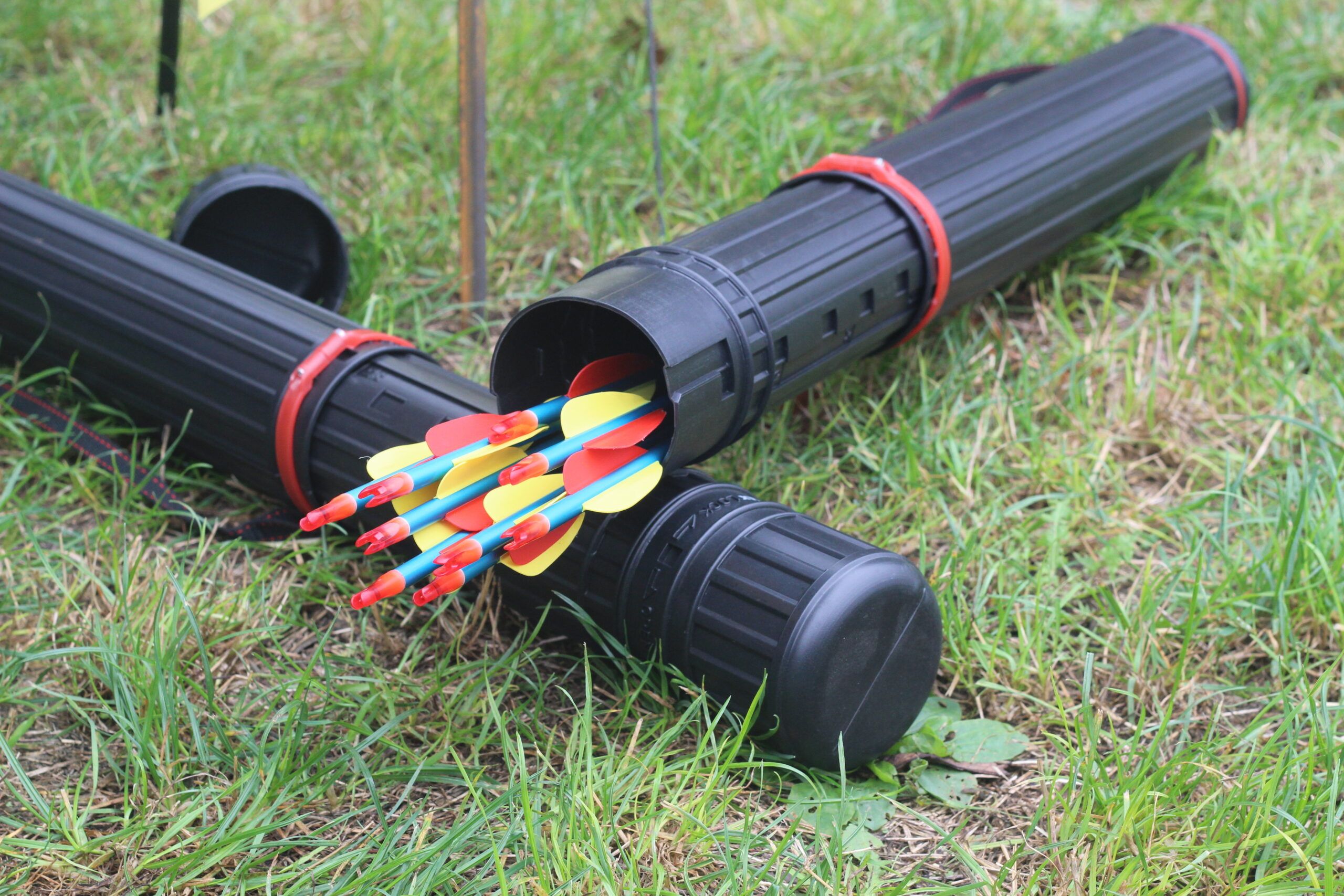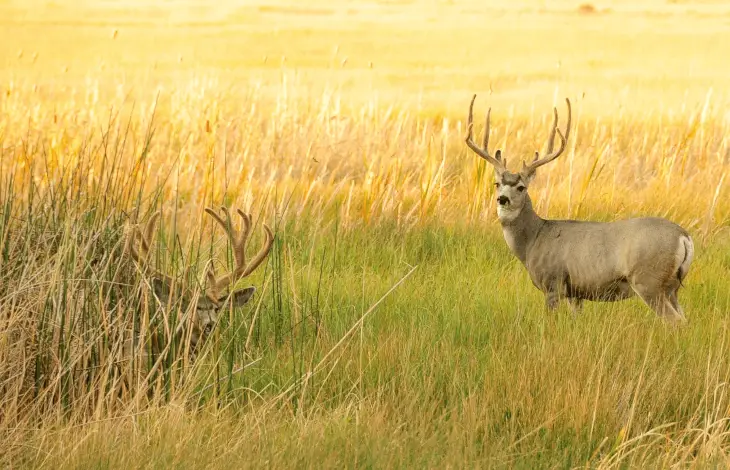Note: Our site links to archery and bowhunting products sold by outside vendors, and we may earn a small commission if you purchase an item after clicking one of these links. Learn more about our affiliate program.
Archers and bow hunters are a surprisingly studious lot, and there’s good reason for that—archery is an in-depth sport, and you need to learn what you’re doing!
As you may have seen, there are plenty of on-line tutorials and websites, but sometimes, nothing beats a good old-fashioned book. Here are some of our favorites, and some titles that can help you on your journey to becoming a capable archer.
Keep in mind, books won’t “get you there”—archery requires a lot of practice, and you can read all you want, but if you don’t practice, you won’t improve—but there are a lot of great books out there, and they can help show you the way.

Best Books for Beginner Archers
- Haywood, Kathleen (Author)
- English (Publication Language)
- 288 Pages - 05/10/2024 (Publication Date) - Human Kinetics (Publisher)
My Favorite Archery-for-Beginners Book. In my humble opinion, this book—Archery: Steps to Success—is a God-send for any new archer, and one of the best to start out with. I think it is one of the absolute best ways to learn basic concepts about the art of archery.
If you’re new to the sport, you have no doubt realized: it can be very, very overwhelming to go from knowing basically nothing to knowing enough to buy a bow, tune it, and take it to the range.
That’s why this book is fantastic. It starts from the very beginning, and introduces the different types of bows, their parts, and how to buy a bow. It then moves on to the steps of the archery draw, talks about refining form, and eventually upgrading your equipment when you get the hang of things.
Perhaps the best part, though, is that it has TONS of colorful photos that illustrate points and drive home information. You’d be surprised how many archery books are stingy with the photos, but this book has plenty. Very helpful, and an excellent purchase. This is, in my mind, one of the best archery books.
- Description|Table of Contents|Author|Excerpts|Quotes
- Johnson, Teresa (Author)
- English (Publication Language)
Another Great Beginner’s Book is Archery Fundamentals, by Teresa Johnson, is another excellent option. Just like “Steps to Success,” it starts from the beginning and slowly builds the reader’s knowledge. Gear, stance, and the shot sequence—it’s all there, PLUS some (somewhat limited) discussion on competition and traditional archery. An excellent option.
Books For Intermediate or Competitive Archers
- Description|Table of Contents|Editor|Excerpts
- English (Publication Language)
- 232 Pages - 12/14/2012 (Publication Date) - Human Kinetics (Publisher)
If you’ve gained a little experience and want to get to that next level, I’d suggest Archery: The Ultimate Resource for Recurve and Compound Archers. This book was actually written by USA Archery (USAA), which is the governing organization for American archery—they organize the largest archery competitions in the U.S. and select archers for international competitions (including the Olympics). In other words… they’re “kind of a big deal around here,” and it’s fantastic that they created this publication.
The book itself is excellent. Chapters are written by various archery coaches, including Kisik Lee, who has been the head coach of the U.S. National Archery team since 2006 (and who has been called “The World’s Best Archery Coach“). It goes over all the fundamentals of archery—stance, shot sequence, follow-through—but also discusses the competitive side of archery, which is something many archery books don’t do. There’s a chapter about how to make more of your archery practice, the physical training that archers need to do, the nutritional aspect of being a competition archer, and sharpening your mind for competitions and events.
This is an excellent book, and if you love archery but want to get very serious about it—and start entering competitions—it’s a great read.
Some Great Traditional Archery Books
Many new archers don’t realize that there are many different varieties of archery—that is, many different styles of archery. If you’re a golfer, you go golfing; if you’re a bowler, you go bowling. If you’re an archer, you can:
- Get into traditional archery
- Learn about Korean bows of Japanese Kyudo bows
- Dive into recurve bows and competitive archery
- Get some friends with specialized bows and play Archery Tag
- Pick up a compound bow and learn about bowhunting
- Get obsessed with horsebows, the traditional bows of Turkey, Mongolia, and the Magyar people…
…and so on and so forth. There are a LOT of avenues you can go down, if you become passionate about archery.
This is all to say, if you’re just getting started, you may want to check out traditional archery. Here are a few books that’ll help you along the way.
If You’re New to Traditional Archery… First of all, visit the forum at TradGang.com, it’s awesome and you’ll love it. There’s a super-active community of traditional archery obsessives, and they are WISE. Then, check out…
- Used Book in Good Condition
- Sorrells, Brian J. (Author)
- English (Publication Language)
The Beginner’s Guide to Traditional Archery, by Brian J. Sorrells. The book is on the slim side, but it covers everything you’ll need to know to get started: traditional equipment and bow types, how to bare shaft tune a bow, and instinctive bowhunting techniques (which is a very difficult thing to teach). There’s not too much out there about traditional archery, and I think this book is a find.
Just a heads up: it does help a little bit if you have a little bit of introductory knowledge about archery—the author jumps into phrases like “brace height” pretty early on in the book, and ideas like that are usually unknown to newbies—so if you’re not familiar with some basic archery terms, you may experience a slight learning curve. If that’s you, you can simply keep an archery glossary handy while you read it (and Wikipedia has a pretty good one).
Anyway, to sum up, this is a great intro guide to traditional archery. Recommended.
If You Want to Know All There Is About Traditional Archery. After you read the Beginner’s Guide, we suggest you read The Traditional Bowyer’s Bible, by Jim Hamm.
- Hamm, Jim (Author)
- English (Publication Language)
- 320 Pages - 07/27/2018 (Publication Date) - CreateSpace Independent Publishing Platform (Publisher)
In this book, you’ll learn… just about everything you’d ever want to know about traditional archery. Want to learn how to build a bow? It’s in there. Want to know the history of traditional archery around the world? It’s in there. Want to learn the correct way to shoot a traditional bow? It’s in there.
The best thing about this book is the obvious passion that went into writing it. This isn’t some weekend enthusiast writing about a hobby he picked up because he was bored at work. This was written by someone who truly, deeply cares about traditional archery, and spent a LONG time writing about it—you can’t fake that.
We think it’s a great option. It’s not for the “only-kind-of-interested” traditional archer—but, honestly, I’ve never met an “only-kind-of-interested” traditional archer! From the people that I’ve met, traditional archers are all very passionate!
Compound Bow Books and Crossbow Books
It’s kind of interesting, but most books about archery end up talking about recurve bows more than they talk about compound bows. I don’t know why that is, but if I had to guess, it’s because compound bows are a little more complicated and it’s easier to talk about recurves, and most archery books are geared towards beginners, and a lot of beginners start out on a recurve bow. But, those are just guesses.
Either way, I thought I’d include a book about that’s mostly about compound bows and crossbows (and a little bit about hunting). The Shooter’s Bible Guide to Bowhunting discusses compounds bows at great length, and talks about how the bow works, how the arrow rests work (and arrow rests for compounds are in fact much trickier than arrow rests for recurves), and how to select arrows for compound bows.
- Used Book in Good Condition
- Kuhn, Todd A. (Author)
- English (Publication Language)
There’s also discussion of crossbows and how to hunt with them. Something you may want to check out if you’re interested in compounds, crossbows, and/or hunting.
For You Bowhunters Out There…
- Bestul, Scott (Author)
- English (Publication Language)
- 240 Pages - 09/15/2015 (Publication Date) - Weldon Owen (Publisher)
When it comes to bowhunting, I like The Total Bowhunting Manual by Scott Bestul and Dave Hurteau, both of whom worked for Field and Stream magazine. This is an incredibly informational book, and you can see the entire mystery of bowhunting revealed in the Table of Contents, from archery-related tasks such as choosing a bow or crossbow, to tuning it, to using a sight and setting the arrow rest, to hunting-related tasks, such as reading bucks, using decoys, and finding the right spot to set and wait. There’s a LOT to know when it comes to bowhunting—it’s basically archery PLUS hunting, and when you think about it, those are two entirely different skill sets—so a book like this can be very helpful.
Perhaps my favorite aspect of this title, though, is the photos—stunning photos of nature, animals, and gear. The writers at Field and Stream are renowned for their expertise, and if you want to get into bowhunting, this is a great place to start.
Lastly, An Archery Book About… Life? Spirituality? Focus?
- Eugen Herrigel (Author)
- English (Publication Language)
- 81 Pages - 01/26/1999 (Publication Date) - Vintage Books (Publisher)
This last one deserves a mention, because it’s a fascinating read: Zen and the Art of Archery. This is less about learning archery—there’s not really much in the way of instruction in the book, so we don’t recommend it if you’re looking to increase your knowledge of the sport—but for those of you interested in archery as a metaphor or tool to understanding the world / a broader spirituality, it’s a great read.
Eugen Herrigel, the author, is a professor in Tokyo, who starts doing archery as a way to understand Zen Buddhism. He ends up under the tutelage of one of the great monk archers, and spends six years studying the traditional Japanese archery called Kyudo. The art of Kyudo is centuries old (it actually originated among the samurai social class in Japan’s feudal era), and the practice is very different from Western-style archery. It features different bows, different process, and a different mentality, and it’s much more imbued with meaning: it’s less about targets and scoring, and much more about mastering a craft, and the determination, strength, and insight needed to do so.
Again, this isn’t your “beginner” archery book, and if you’re looking for help on how to tune a bow, you’re definitely not going to find it here, but if you love archery and want to increase your knowledge of the sport and how culture and spirituality can shape the practice—well, this is it!
Go, and Get Your Learn On
There are dozens of archery titles out there, and these are the ones we think may help you the most. If you’re about to “get your learn on,” we wish you all the best! Archery is a deep-dive sport—it’s easy to pick up the basics, but it takes a long time to master the art, and discovery will both come through experience and study. Good luck!












